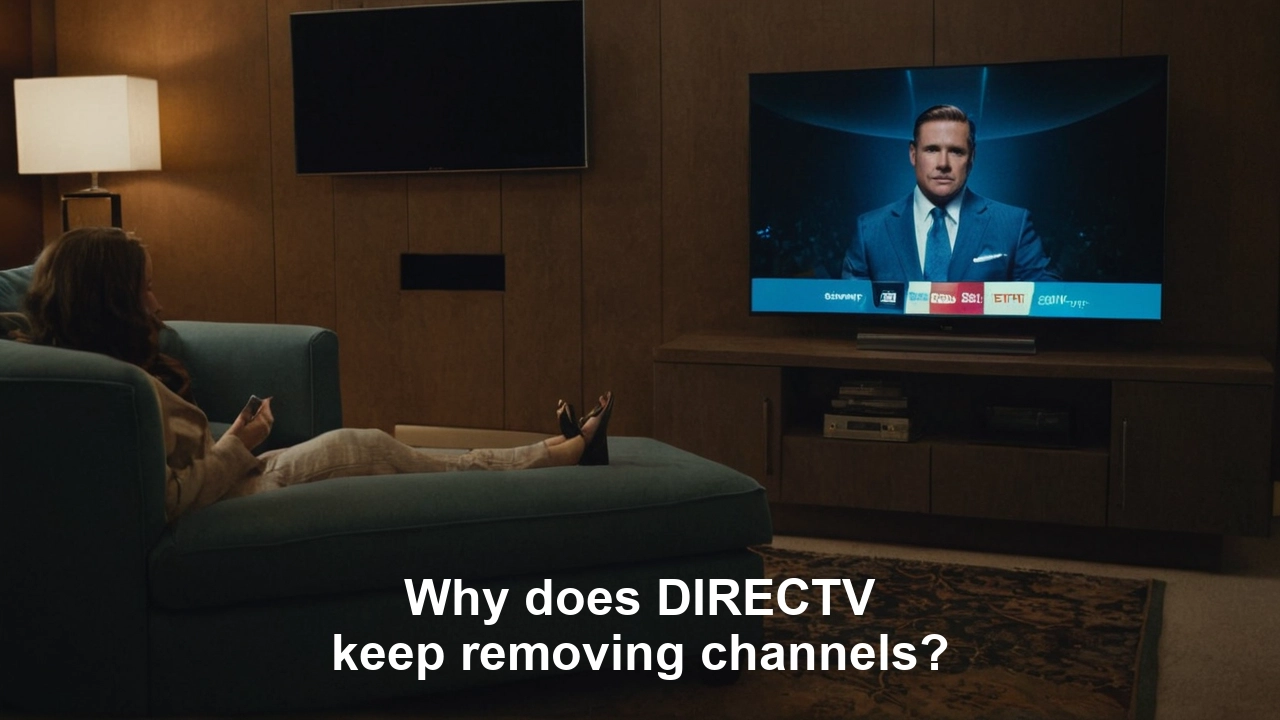Why does DIRECTV keep removing channels?
DirecTV Removes Channels – What is happening in the world?
Currently one of the leading satellite TV service providers in the United States, DirecTV has been dropping channels from its list of offerings which has upset many of its customers. This has left many people wondering why DirecTV would want to pull out some of the most-watched channels and what drives such actions.
Rising Content Costs
The increased cost of content is one of the key factors, which have led DirecTV to remove some of the channels. Companies like DirecTV obtain large sums of money from content owners and media houses in exchange for distributing their channels. But these programming costs have been escalating year on year, particularly for the sports channels such as ESPN. If they are absorbed by the company, then these costs pull down DirecTV’s revenues and profits as costs increase. Well, cutting some of the costly platforms is one way to assist in helping them offset the upsurge in content costs.
Carriage Disputes
Another source of DirecTV’s missing channels problem is failed retransmission consent negotiations between DirecTV and some content providers. Channels demand more and more license fees for their program to be aired on the platform. In the event that DirecTV feels that the amount they are asking is too much or undesirable, they will be willing to let that particular contract run out instead of having to pay the extra amount. This can lead to short or long-term channel blackouts where the channel is offline until a settlement is made or one side surrenders.
Regional Sports Networks
Regional sports networks such as Fox Sports and Comcast NBC Sports have become a thorn in the flesh of many TV providers including DirecTV. Given the high rights fees for local MLB, NBA, and NHL games, regional sports networks are among the most expensive channels. And since most of these RSNs are owned by media giants with great leverage, carriers have a hard time controlling these costs. Therefore, one of the strategies that DirecTV has employed in a bid to tackle its bloated costs is to eliminate RSNs.
Thinning Out Duplicate Channels
In their efforts to limit fees, DirecTV has also tried to remove redundant channels from their list of offerings. Given that DirecTV has many sister channels with a majority of programmers including Viacom and Disney among others, it probably views having two or more channels from the same company as an unnecessary expense. For example, by merging and maintaining, for instance, only one MTV channel, they can shave off a little bit of expenses while hardly affecting the number of channels offered.
Slowing Subscriber Growth
Challenges posed by other online streaming providers such as Sling TV and YouTube TV have also influenced Direct TV's decisions on channels. While prices continuously emerge as an issue and channel bundles from rivals becoming less complicated, DirecTV is losing its stable subscribers. Well, one of the things they can try to do to at least maintain somewhat lower prices is to cut out expensive networks.
Appeasing Stockholders
As you can expect with any public firm, the executives’ primary goal is always to keep their stockholders satisfied. After observing that subscriptions reached their apex years ago, AT&T, which owns DirecTV, has directed them to look for ways to boost their profits and revenue growth through some cost-cutting. Sustaining the measures of programming that the company considers irrelevant or those that contribute minimal value is a strategy that can work towards increasing the margins and strengthening the profitability. Thus channel removals are facilitated by divergent interests of shareholders.
Do Channel Lineup Changes Backfire?
Even though it makes perfect sense to eliminate costly services, it is not without adverse effects on the customers’ perspective. Some subscribers also may see that they are no longer paying for their favorite channels, something which may make them wary of paying their monthly bills. This can then lead to canceling their TV package out of frustration with the few channels that are offered to them. Moreover, many of the customers find the high rate of contract disputes and negotiations confusing and frustrating. They can harm DirecTV’s brand image and perceived trust by its current subscriber base.
What Can Subscribers Do?
For the subscribers who are disappointed by the fact that some channels are no longer included in their packages from DirecTV, they have several things to do. Customers can try to contact DirecTV and file a complaint to demand their accounts be credited for the missing channels. If the savings from streaming TV drive better value, switching providers is another possible course of action. Finally, some of the lost channels, such as regional sports networks, may still be watchable after paying for season passes directly from the channel if the option is available.
However, skepticism surrounds whether these measures will indeed pay off in the long run by keeping more subscribers loyal to DirecTV while other factors such as an increase in content costs and other factors compel the company to cut programming. The expectation of competitive pricing regarding staying loyal customers is likely to be met by many customers. However, if it confirms the further reduction of subscribers, channel availability becomes inadequate to cover the costs compared to streaming competitors. In either case, customers can anticipate that DirecTV will engage in more periodic channel negotiations and lineup adjustments as the cable industry progresses.
Upgrade your TV experience now! Call (469) 213-7481 to explore Satellite TV options tailored for you.


